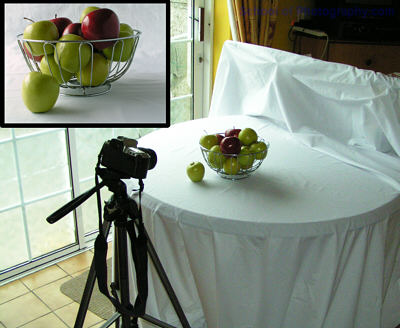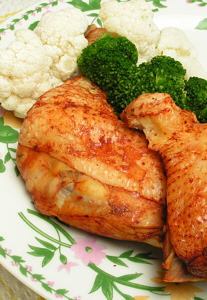 |
Still Life Photography
Still Life images can be just about anything that doesn’t move. The definition of a still life subject is an inanimate object but other subjects are loosely termed as still life as well. These include flowers, food, etc. They are life forms but they don’t move.
Because the subjects are smaller, lighting coverage is less and alternatively less power is needed. Rather than the need of a massive amount of studio equipment, still life setups can be lit with just daylight from a large window and/or the use of one or two flash guns with the aid of a few large white cards to utilise as reflectors.
Lighting
Like all studio work, getting strong enough lighting to light the subject suitably is the tricky bit. Remember that lighting is the most important consideration with photography. Lighting a small area though is much easier in one respect but much more skillful in another way. However once lighting technique has been mastered, setting up a still life studio will be quick and easy.
Daylight – The most natural form of lighting is undoubtedly daylight. The problem though is it’s impossible to fully control. Optimum lighting conditions can be predicted but then the photographer must schedule their shoots accordingly. Some control of the light can be obtained through the use of reflectors to bounce light into shadow areas and diffusing material to soften strong sunlight falling on the work area.
 |
Flash – For full lighting control flash is the most versatile answer, even flash lighting from a standard flashgun. Exposure, lighting angle and lighting quality can all be fully controlled in any situation or location. A flashgun that can be used on and off camera is preferable.
An off-camera flash gives the advantage of using directional lighting from any angle. Also this gives the option of diffusing the flash. The flash can be diffused by either bouncing it off a reflective surface, such as a large card, or firing it through material to soften its effect. It is also quite easy to use more than one flash through the use of slave units.
Because flash is perfectly balanced with daylight, the two lighting sources can be utilised to light a single image. For example with a window studio, flash can be used to fill-in deep shadow areas. The trick though is to balance it with the daylight in order to achieve natural looking results.
Fig 2 was taken using just a flashgun and one reflector. The flashgun was off camera and aimed at a large reflector over the subject. This bathed an even diffused light onto the subject resulting in an evenly lit image with very little shadow.
For more on creating that special image, enroll in one of our courses.
